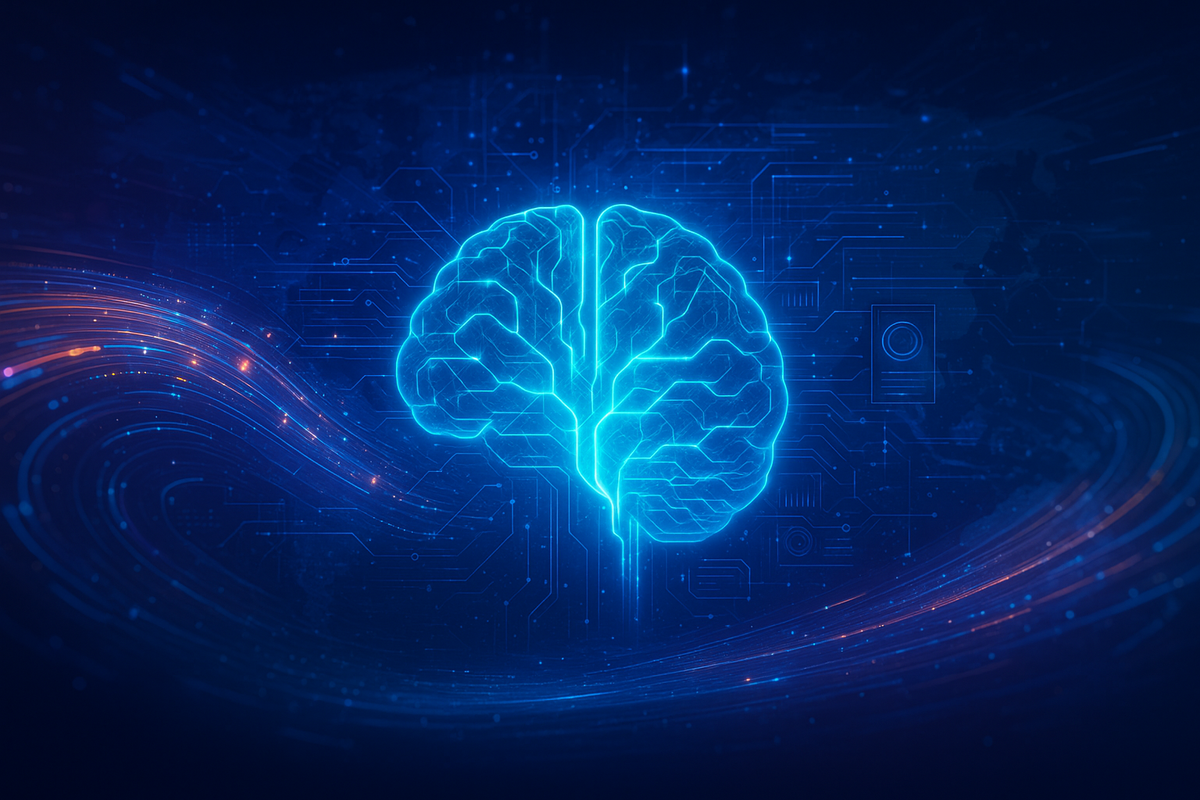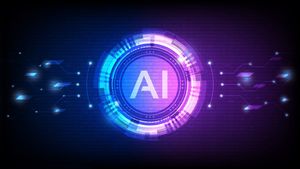Financial News
OpenAI Unveils GPT-5: A Quantum Leap in AI That Could Reshape the AI Landscape

On August 7, 2025, OpenAI (a private company, but closely partnered with Microsoft Corporation (NASDAQ: MSFT)) launched GPT-5, its highly anticipated next-generation artificial intelligence model, during a global livestream event dubbed "LIVE5TREAM." The announcement, led by CEO Sam Altman, showcased GPT-5 as the "smartest, fastest, most useful model yet," featuring unified reasoning architecture, advanced multimodality, and autonomous agent functionalities. This launch comes amid an intensifying AI arms race, with immediate access granted to ChatGPT Team customers and developers via OpenAI's API, signaling a rapid push toward widespread adoption.
The immediate implications are profound: GPT-5's capabilities could accelerate automation across industries, potentially boosting productivity while raising concerns about job displacement and ethical AI use. Stock markets reacted swiftly, with AI-related shares surging as investors bet on the transformative potential, though volatility looms due to regulatory scrutiny and competition from rivals like Alphabet Inc. (NASDAQ: GOOGL). For public companies, this event underscores the urgency to integrate advanced AI or risk obsolescence, potentially reshaping market dynamics in tech, finance, and beyond.
Unpacking the GPT-5 Launch: A Milestone in AI Evolution and Its Critical Importance
The GPT-5 launch on August 7, 2025, unfolded as a meticulously orchestrated event, beginning at 1 PM Eastern Time with a live broadcast on OpenAI's platforms. Sam Altman took center stage, unveiling the model's core innovations, including a unified reasoning architecture that automatically selects optimal reasoning paths for user queries, eliminating manual interventions. Demonstrations highlighted enhanced multimodality, allowing seamless processing of text, images, audio, and video, alongside persistent memory for extended interactions and reduced hallucinations for greater factual accuracy. Immediate availability for enterprise users and a premium GPT-5 Pro version were announced, with broader rollouts planned shortly after. This positions GPT-5 not just as an upgrade but as a foundational tool for business intelligence, capable of tackling complex problems in coding, science, and math with PhD-level proficiency.
The timeline leading to this moment reflects OpenAI's iterative approach to AI development. Starting with GPT-1 in 2018 and GPT-2 in 2019, the company made a quantum leap with GPT-3 in 2020, which introduced large-scale text generation. ChatGPT's debut in 2022, powered by GPT-3.5, amassed over 100 million users, followed by GPT-4 in 2023, which added multimodal capabilities. Recent precursors included GPT-4o in 2024 and GPT-4.1 in April 2025, with teasers from Altman building hype in the weeks prior. Development involved massive computational resources, extensive fine-tuning, and safety testing, culminating in this release amid growing anticipation for AGI-like advancements.
Key players include OpenAI's leadership: Altman as the strategic visionary, Greg Brockman (President) overseeing infrastructure, Jakub Pachocki (Chief Scientist) driving research, and partners like Microsoft, which provides Azure cloud support through its $13 billion investment. Stakeholders extend to early testers, developers, and enterprises such as BNY Mellon and T-Mobile, who stand to integrate GPT-5 for productivity gains. Initial reactions were mixed—enthusiasm from developers for API access, but tempered by observations that the leap from GPT-4 feels evolutionary rather than revolutionary, sparking debates on its true disruptive potential.
Why does this matter? GPT-5's launch amplifies the AI race, potentially unlocking trillions in economic value while forcing industries to confront ethical dilemmas, regulatory needs, and workforce shifts. It underscores AI's role in competitive advantage, with immediate market ripples seen in surging tech stocks and heightened investor focus on AI integration.
AI Titans Rise, Laggards Falter: Winners and Losers in the Wake of GPT-5
The GPT-5 launch is poised to create clear winners among companies that can harness its power, particularly those in cloud computing, semiconductors, and AI integration. Microsoft Corporation (NASDAQ: MSFT), as OpenAI's primary partner, stands to gain immensely through increased demand for its Azure platform, which hosts GPT models. This could drive revenue growth in cloud services, with deeper integrations into products like Microsoft 365 Copilot enhancing subscriptions and market share. Similarly, Alphabet Inc. (NASDAQ: GOOGL) benefits via Google Cloud, as businesses flock to its infrastructure for AI workloads, potentially boosting its competitive edge against rivals despite internal pressures to accelerate its Gemini models.
In the semiconductor space, NVIDIA Corporation (NASDAQ: NVDA) emerges as a top beneficiary, with its GPUs essential for training and running advanced models like GPT-5. The launch could fuel explosive growth in NVIDIA's data center segment, solidifying its dominance amid insatiable AI chip demand. Advanced Micro Devices, Inc. (NASDAQ: AMD) also wins as a challenger, with its MI300 GPUs offering alternatives, potentially capturing market share through competitive pricing and performance. Taiwan Semiconductor Manufacturing Company Limited (NYSE: TSM), as the leading chip fabricator, sees indirect gains from heightened orders, supporting its advanced manufacturing capabilities.
On the losing side, smaller AI startups with niche, less capable models may struggle, as GPT-5 commoditizes basic AI functions, eroding their value propositions and pressuring revenues. Business process outsourcing firms like Genpact Limited (NYSE: G) face disruption, with GPT-5 automating routine tasks in data processing and customer service, necessitating pivots to AI-augmented services or risking market share loss. Traditional content agencies, such as WPP plc (LSE: WPP) and Omnicom Group Inc. (NYSE: OMC), could suffer if clients shift to in-house GPT-5 tools for basic copywriting, forcing a focus on high-level strategy to survive.
Financial giants like JPMorgan Chase & Co. (NYSE: JPM) and Bank of America Corporation (NYSE: BAC) might see mixed effects—efficiency gains from automation, but challenges in reskilling workforces for displaced roles. Overall, winners will be those investing in AI infrastructure and integration, while losers lag in adaptation, potentially facing stock volatility and competitive disadvantages.
Beyond the Hype: GPT-5's Ripple Effects on AI Trends, Competition, and Global Policy
GPT-5 fits seamlessly into broader AI trends like the pursuit of AGI, multimodal mastery, and agentic functionalities, accelerating the shift toward unified intelligence that processes diverse data types with minimal human input. This builds on the industry's move from narrow AI to more general systems, as seen in predecessors like GPT-4o, and intensifies the focus on safety through mechanisms like watermarking and RAG. Historically, it echoes pivotal moments such as the GPT-3 launch in 2020, which democratized text generation, or even the internet's advent, reshaping economies much like GPT-5 could transform knowledge work.
Ripple effects on competitors are intense: Google faces pressure to advance Gemini, potentially hastening releases, while open-source players like Meta Platforms, Inc. (NASDAQ: META) with Llama may struggle against GPT-5's proprietary edge, leading to alliances or accelerated innovations. Partners like Microsoft benefit from deeper integrations, but must adapt to new demands, fostering opportunities in healthcare and finance through customized applications. Broader implications include job displacement, with IMF estimates suggesting 14% of customer service roles at risk by 2027, prompting workforce reskilling.
Regulatory implications loom large, amplifying calls for global AI governance amid concerns over bias, misinformation, and monopolies. The U.S. government's early access to GPT-5 signals potential policy shifts, drawing parallels to historical precedents like the Manhattan Project, where technological leaps outpaced ethical frameworks. Comparisons to past AI winters highlight the risk of hype cycles, but GPT-5's tangible advancements could sustain momentum, influencing policies on data privacy and AI ethics worldwide.
Charting the Path Forward: Post-GPT-5 Horizons and Strategic Shifts
In the short term, expect hyper-automation across sectors, with companies rapidly integrating GPT-5 for efficiency gains in customer service and data analysis, potentially leading to new AI-powered products within months. Long-term, this could edge closer to AGI by 2030, redefining work through human-AI collaboration and integrating with technologies like IoT, though challenges like computational costs and ethical risks persist. Scenarios range from an "AI Boom" of unprecedented growth to a "Digital Maze" where integration hurdles slow adoption.
Strategic pivots are essential: firms must invest in AI literacy, data governance, and ethical frameworks, pivoting to agile systems that leverage GPT-5's agents for task automation. Market opportunities emerge in AI consulting and specialized solutions, but challenges like job displacement and regulatory scrutiny could create volatility, requiring adaptive strategies to capitalize on personalization and innovation.
Wrapping Up the GPT-5 Era: Key Insights and Market Outlook
In summary, GPT-5's launch on August 7, 2025, highlights transformative advancements in reasoning, multimodality, and autonomy, positioning OpenAI at the forefront while accelerating industry-wide innovation and ethical debates. Key takeaways include its role in boosting productivity, intensifying competition, and underscoring the need for responsible AI deployment.
Assessing the market moving forward, optimism prevails with projected AI growth to $1.87 trillion by 2030, though volatility from overvaluation and adaptation challenges looms. The lasting impact could mirror historical tech revolutions, fostering economic value but demanding societal adjustments. Investors should watch for regulatory developments, competitor responses like Google's next moves, adoption rates in enterprises, and signs of AGI progress in the coming months to gauge sustained momentum.
More News
View More





Quotes delayed at least 20 minutes.
By accessing this page, you agree to the following
Privacy Policy and Terms Of Service.



